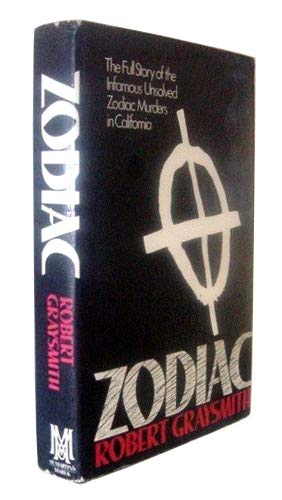Reviewed by gmcgregor on
Robert Graysmith was a political cartoonist at the San Francisco Chronicle when those cryptograms started coming in, and his book Zodiac details the case and how it sucked him in. He developed friendships and relationships with the reporters and police working the case and couldn't stop himself from doing a bit of his own investigating on the side. The book describes the crimes police are certain were committed by the Zodiac and then goes on to crimes they think he committed, and their befuddlement as his claimed body count in his letters goes up and up without real certainty as to which disappearances and murders actually belong to him. It could be a handful. It could be a few dozen. It could be hundreds. There's really no way to be sure.
For me, the strongest part of the book was the first half or so, the crimes we can definitely connect to the Zodiac. Graysmith narrates the last hours in the lives of the victims, tension building as the reader knows that the grisly and terrifying end is coming up just around the corner. He narrates the confusion of the police, left with bloody crime scenes with no apparent motive and no clues. And then the cryptograms and taunting letters start coming, rubbing their faces in it, threatening school buses of children with bombs, forcing them to take him seriously even as they got nowhere trying to figure out who he was.
But it falls apart a bit as the letters keep coming but it gets harder to tie the boasts they contain to actual crimes. There are unsolved murders, but they fall outside his usual M.O. Did he switch things up to throw them off? Or are these entirely different perpetrators? And as the letters themselves became less and less frequent, Graysmith starts chasing his own leads. The book is less and less sure of the story it's trying to tell. Is it true crime? Is it a murder mystery? Is it a story about men who can't let go of a puzzle that got the best of them? It just kind of meanders around without much of a point. And Graysmith wasn't really a writer, and it shows: his prose isn't particularly great. We don't really get a handle on anything: the Zodiac killer, the personalities of the police hunting him, even the suspects Graysmith tracks down. It's just a pretty rote recitation of increasingly disjointed facts. If you're a devotee of true crime stories, especially about serial killers, or are interested in the Zodiac case, you might like this. I was hoping to like it more than I actually did.
Reading updates
- Started reading
- 20 June, 2016: Finished reading
- 20 June, 2016: Reviewed
